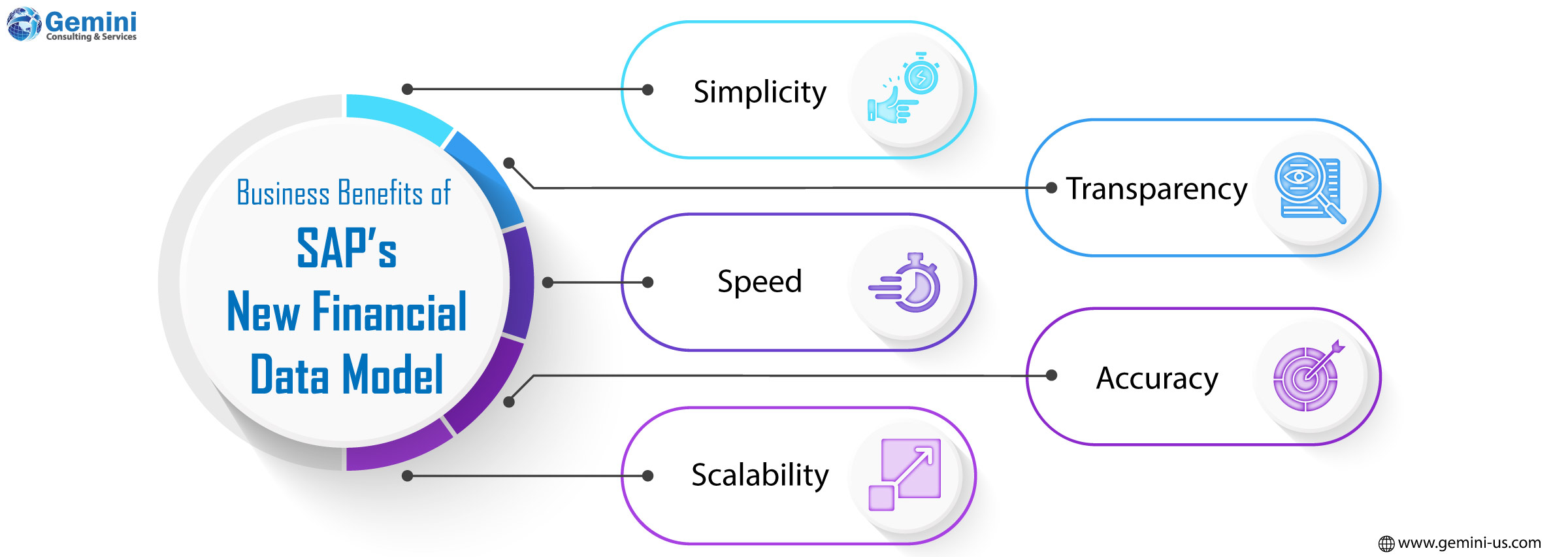SAP systems have long been known for their powerful integration capabilities, seamlessly connecting different areas of a business, such as finance, sales, purchasing, and manufacturing under a unified digital core. However, with this level of integration comes a degree of complexity, especially when it comes to how and where data is stored. Historically, financial data in SAP systems has been spread across multiple specialized tables, each serving a distinct purpose. This often made it difficult to extract the full picture of a company’s financial position without extensive technical knowledge or complex custom reports.
To address these challenges and align with modern business needs, SAP introduced a revolutionary change in its latest ERP platform: SAP S/4HANA Finance. This solution modernizes and simplifies financial data architecture, integrating key financial processes and providing more transparent, real-time insights. At the core of this transformation is the new finance data model, built around two groundbreaking concepts: the Universal Journal (ACDOCA) and real-time integration between Financial Accounting (FI) and Controlling (CO).

A Historical Perspective: Why Change Was Needed
In earlier versions of SAP ERP systems, Financial Accounting and Controlling were designed as two separate modules. This separation was influenced by traditional accounting practices, particularly in regions like Germany, where financial and managerial accounting often followed distinct standards and processes. While this separation made sense in a localized context, it became increasingly limiting for global businesses striving for efficiency, transparency, and speed.
Managing two sets of financial records meant dealing with data replication, potential inconsistencies, and the need for reconciliation processes to ensure everything matched. It also required maintaining a complex web of tables each storing specific slices of data, which made reporting cumbersome and often delayed.
SAP S/4HANA Finance addresses these pain points by combining all relevant financial data into a unified data structure, eliminating redundancies and enabling real-time financial analysis.
The Universal Journal: One Table to Rule Them All
The centerpiece of SAP’s new financial data model is the Universal Journal, represented by the database table ACDOCA. This table was designed to consolidate various financial components, such as General Ledger, Controlling, Asset Accounting, and the Material Ledger into a single source of truth.
Before S/4HANA was implemented, financial information was distributed across multiple distinct tables. These included index tables (like BSIS, BSAS, BSID, BSAD, BSIK, and BSAK) to manage open and cleared items, totals tables (such as GLT0 and FAGLFLEXT) for financial reporting, and controlling tables (including COEP, COSS, and COSP) to monitor internal cost flows. Additional specialized tables were used for managing fixed assets and the material ledger.
With the introduction of the ACDOCA table in S/4HANA, all this information is now unified within a single line-item table. Each time a transaction is posted, associated data—such as G/L accounts, cost centers, assets, and profitability segments—is captured in one place. This consolidation improves reporting efficiency and allows for real-time insights without the need to reconcile data from multiple sources.
The in-memory computing capability of SAP HANA comes in handy. Unlike traditional row-based databases, SAP HANA uses a columnar data model, allowing rapid access to vast amounts of data in real time. This architectural advantage made it technically feasible to store detailed financial data in a single, centralized table without performance degradation.
Backward Compatibility Through CDS Views
While the new model renders many traditional tables obsolete, SAP maintains compatibility through Core Data Services (CDS) views. These views replicate the structure of the old tables, allowing businesses that transition via brownfield implementations to continue running legacy custom reports and programs without immediate modification.
This design choice offers flexibility for organizations migrating to SAP S/4HANA, enabling them to benefit from the new architecture while managing the transition at their own pace.
As a gold partner of SAP, Gemini Consulting & Services has over a decade of experience in implementing SAP solutions for enterprises operating in various industry segments. Contact us to learn how our consultants can help you in customizing and implementing SAP S/4HANA Finance.
Real-Time Integration: Merging Financial and Managerial Accounting
The Universal Journal integrates Financial Accounting (FI) and Controlling (CO) in real-time unlike in the past, where companies had to rely on the reconciliation ledger to ensure that both modules stayed in sync—a time-consuming and error-prone process.
The universal Journal records all transactions related to internal allocations or external invoices in real-time. This eliminates the need for reconciliation. Even internal cost flows, such as assessments or distributions between cost centers, generate both a controlling document and a corresponding financial accounting document number.
Moreover, secondary cost elements, previously unique to Controlling, are now managed as standard G/L accounts. This change reinforces the harmony between internal and external accounting processes.
To facilitate this integration, document types in Controlling are configured to trigger simultaneous postings to General Ledger accounts. These document types are mapped to internal business transactions, ensuring that every controlling entry is matched by a financial accounting entry. The result is a seamless connection between operational data and financial reporting, enabling organizations to close their books faster and gain more immediate insight into business performance.

The shift to SAP S/4HANA’s new finance data model brings numerous advantages:
- Simplicity: The new financial data model has lesser number of tables making it simple to maintain and manage.
- Transparency: Consolidates financial data into a single source of truth
- Speed: Enables real-time reporting and analysis
- Accuracy: Minimizes reconciliation efforts and risk of data inconsistencies
- Scalability: SAP HANA offers the capability to analyze high volumes of data
These benefits not only reduce operational costs but also empower finance teams to be more strategic. With faster close cycles, real-time profitability analysis, and a unified reporting structure, finance leaders can focus more on decision-making and less on data wrangling.
Conclusion
SAP S/4HANA Finance is more than just an upgrade—it’s a complete transformation of how financial data is managed and utilized. By introducing the Universal Journal and enabling real-time integration between FI and CO, SAP has simplified the financial architecture while enhancing the depth and speed of financial insights.
For companies aiming to thrive in a fast-paced, data-driven world, embracing this new model is not just a technical decision—it’s a strategic one.



